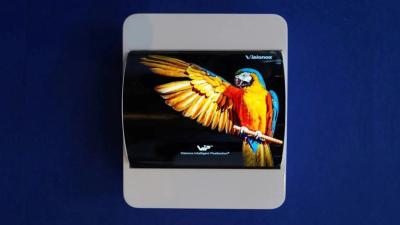A report from Korea's The Elec publication says that Samsung Display is highly interested in next-generation OLED deposition technologies, that are not based on a metal mask (FMM). Several companies are developing and commercialization such technologies. As these may enable higher-performance OLED production, Samsung Display is interested.
A few months ago we reported that SDC is interested in SEL's maskless production technology, and indeed the new The Elec report states that the two companies are in talks. SEL is one of the three companies we are aware of that have advanced maskless technologies, the other two being Visionox and Japan Display. Samsung Display is mostly interested in a technology that it can exclusively license as it does not want other companies to produce OLEDs using the same technology. Both Visionox and JDI are interested in using their technologies in-house, which is a problem for SDC.
SEL developed a process that does not use FMM, and can be highly effective. One interesting note about SEL's new production process is that the encapsulation of the OLED materials is performed before the patterning process, which is based on wet etching. This is unlike other production processes in which the encapsulation is the last step of the process. We do not have a lot of information on SEL's maskless process.
SEL developed many other innovative OLED technologies, including an OLED device architecture called ExTET ('exciplex triplet energy transfer') that can increase the performance of OLED devices, CAAC-IGZO (C-Axis aligned crystalline In-Ga-Zn-O) backplane technology, flexible OLED embedded photodetectors, foldable OLED technology and more.
n 2022, Japan Display (JDI) announced that it has developed a "historic breakthrough in display technology" - a new OLED deposition process which they refer to as eLEAP, that is said to be cost effective and can be used to create freeform OLEDs that are brighter, more efficient, and longer lasting compared to OLEDs produced using mask evaporation (FMM).

eLEAP is based on a lithographic method, and does not require any masks. The main advantage seems to be that OLED displays produced by eLEAP technology can achieve an aperture ratio of 60%, compared with FMM OLEDs which achieve a ratio of about 28%. This means that the OLED displays can be driven at lower currents - which extends the lifetime, improves the efficiency and also enables higher-peak brightness when needed. JDI claims that eLEAP displays offer a boost of 2X in emission efficiency and peak brightness - while lifetime is extended by of 3X (which also reduces burn-in problems).
A few months ago Visionox also introduced a new OLED production technology, called Visionox Intelligent Pixelization (or ViP for short) that enables higher-density display production, at over 1,700 PPI.
The idea behind ViP is to replace the fine metal mask (FMM) method with photolithography-based pixel patterning. The process offers several advantages, mainly the increase of aperture ratio to almost 70% (Visionox says the currently reach 69%). FMM methods usually achieve up to 30%, which means that brightness, efficiency and lifetime can all be increased. Visionox reports that when combined with its tandem-stack architecture, its ViP OLEDs enjoy a 6X increase in lifetime, or about 4X increase in brightness, compared to its standard FMM AMOLEDs.
Visionox has succeeded in producing small ViP display prototypes (you can see one above), and the company is now developing mass production capabilities. The company started developing this technology in 2016.


